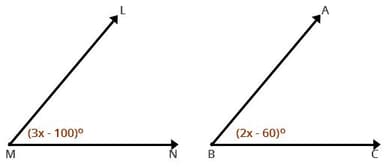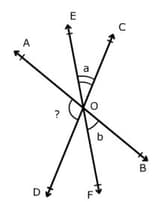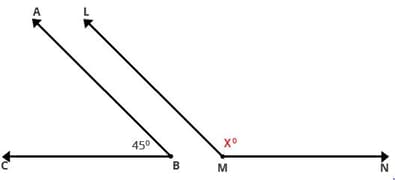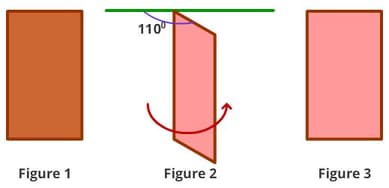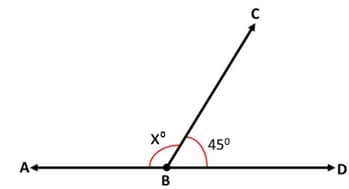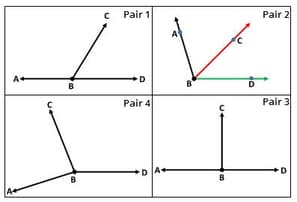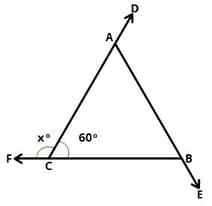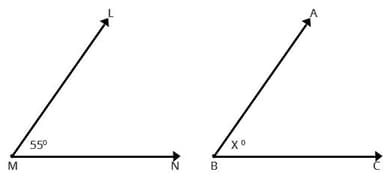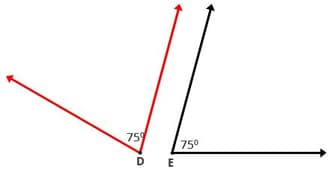Two angles are called adjacent if ________________
Important Questions on Lines and Angles
If the $ \angle\text{ LMN}$ and $ \angle\text{ ABC}$ are complementary angles, then the value of $ x$ is _____
In the figure below lines AB, CD and EF intersect at point O. The sum of angles “a" and “b" is $ 80°$.
(Note: The figure not to scale.)
The measure of the angle $ \angle $AOD is _____degrees.
If the angles in a linear pair are congruent then the angles are right angles. Is this statement true or false?
Which of the following pairs can be considered to be complementary angles?
If ∠ABC and ∠LMN are supplementary angles, then the value of x is _____ degrees.
The card shown under figure 1 below is being turned over by an angle of $ 110°$ as shown under figure 2.
The minimum angle by which the card in figure 2 must be turned to look like the one in figure 3 is _____degrees.
Half the value of a supplementary angle is _____ degrees.
Which of the following pairs are supplementary angles?
In the given diagram, the value of $x$ is _____ degrees.
Of the listed examples of angles $ \angle \text{ABC}$ and $ \angle \text{CBD}$, which pair can be considered to be an example of a linear pair of angles?
In the given diagram, the value of $ \text{x}$ is _____ degrees.
In an exam, Rakesh was asked to identify complementary angles from among two options. His answer was Option A. Was he right?
In the figure below, AE is a line. O is the common point of all rays OB, OC and OD.
The measure of $ \angle $AOB is _____degrees.
The sum of two adjacent angles in a linear pair is _____ degrees.
If one of the angles in a linear pair is acute then the other angle would be
If two angles form a linear pair of angles then they are adjacent. Is this statement true or false?
If in the given diagram $ \angle\text{ LMN}$ and $ \angle\text{ ABC}$ are complementary angles, then the value of
“$ x$" _____ degrees.
If an angle is $ 60°$ more than two times its complementary angle, then its value is _____ degrees.
In the given figure, $ \angle\text{ D}$ and $ \angle\text{ E}$ are supplementary angles. Is this statement true or false?


